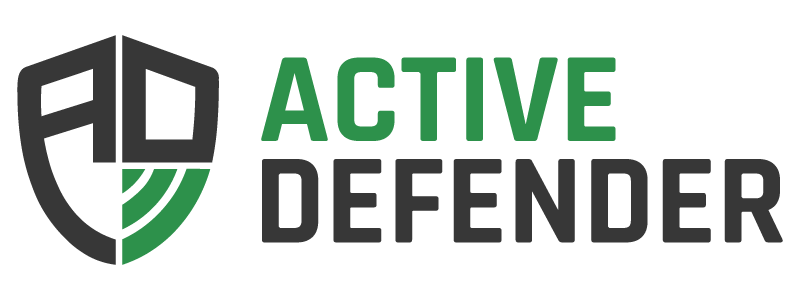In today’s educational environment, ensuring the safety and security of school campuses has never been more critical. School administrators and resource officers are pivotal in maintaining a secure learning environment. However, with the myriad of responsibilities they juggle daily, it’s easy to overlook common vulnerabilities and exposures (CVEs). Awareness of these vulnerabilities is crucial to preventing potential security breaches and ensuring a safe space for students and stakeholders.
Understanding Common Vulnerabilities and Exposures
Common vulnerabilities and exposures (CVEs) are publicly disclosed security flaws that malicious entities can exploit. These vulnerabilities can be physical, such as unsecured entry points, or related to emergency preparedness, such as outdated response plans. Overlooking these vulnerabilities can lead to severe consequences, including unauthorized access, data breaches, and physical harm.
Impact of Overlooked CVEs
The impact of overlooking CVEs can be devastating. For instance, an unsecured entry point might allow an intruder to enter the campus undetected. Similarly, inadequate emergency preparedness can lead to chaos during critical situations. Real-world examples abound where overlooked CVEs have resulted in significant security incidents, highlighting the importance of addressing these vulnerabilities proactively.
The Importance of Awareness in Campus Safety
Awareness is the cornerstone of campus safety. School administrators and resource officers can mitigate risks by staying informed about potential vulnerabilities and exposures. This is where Active Defender steps in. Active Defender’s mission is to enhance campus safety by providing real-time situational awareness, ensuring everyone knows the nature and location of any alert and can respond appropriately.
Comprehensive Checklist for Assessing Common Vulnerabilities and Exposures
To help school administrators and school resource officers ensure no CVEs are overlooked, we’ve developed a comprehensive checklist covering physical security and emergency preparedness. This checklist is designed as a walk-through guide for assessing your campus and prioritizing actions to enhance awareness and reduce risk.
Section 1: Physical Security Walk-Through
Entry and Exit Points
- Assess Main Entrances:
- Ensure all main entrances are secure with functioning locks and access control systems.
- Ensure that visitor check-in procedures are strictly followed and that visitors wear identifiable badges.
- Verify that doors close and lock automatically.
- Evaluate Secondary Exits:
- Inspect secondary exits to ensure they are secured and not propped open.
- Confirm that emergency exits are marked and unobstructed.
- Check that all exit doors are equipped with alarms that sound when opened.
Active Defender’s Integration with Existing Security Systems
Active Defender integrates with existing systems such as door locks, cameras, and panic buttons, providing comprehensive security coverage. It enhances situational awareness for first responders, alerts local authorities with detailed information, and reduces response times.
To discover how Active Defender’s Security System Integration can benefit your school, visit https://active-defender.com/ad-demo/.
Locks and Barriers
- Classroom and Office Doors:
- Ensure all classroom and office doors have functional locks.
- Verify that doors can be locked quickly from the inside during an emergency.
- Regularly test locks and repair faulty ones.
- Fencing and Gates:
- Inspect perimeter fencing for any gaps or weaknesses.
- Ensure that gates are locked and monitored during school hours.
- Consider additional barriers for high-risk areas.
Surveillance Systems
- Camera Placement:
- Conduct a walk-through to ensure surveillance cameras are placed at all critical points, such as entrances, exits, hallways, and common areas.
- Ensure cameras are not obstructed and provide clear views of monitored areas.
- Monitoring and Maintenance:
- Verify that cameras are functioning correctly and recording footage.
- Regularly review footage to identify any suspicious activity.
- Schedule routine maintenance to keep the surveillance system in optimal condition.
Lighting
- Interior and Exterior Lighting:
- Check that all interior and exterior lights are operational.
- Ensure that parking lots, walkways, and entrances are well-lit.
- Replace any broken or dim lights promptly.
- Motion-Activated Lights:
- Install motion-activated lights in less-trafficked areas to deter unauthorized access.
- Test motion sensors regularly to ensure they trigger correctly.
Section 2: Emergency Preparedness Walk-Through
Emergency Plans
- Review and Update Plans:
- Regularly review and update emergency response plans to reflect current best practices and any changes in campus layout.
- Ensure plans cover a range of scenarios, including natural disasters, intrusions, and medical emergencies.
- Distribute updated plans to all staff and ensure they are familiar with their roles.
Drills and Training
- Conduct Regular Drills:
- Schedule and conduct regular drills for various emergency scenarios, including lockdowns, evacuations, and shelter-in-place.
- Include all stakeholders in drills, ensuring everyone knows their roles and responsibilities.
- Evaluate each drill and make necessary adjustments to improve response times and effectiveness.
- Training Sessions:
- Provide ongoing training sessions for staff on emergency procedures.
- Include scenario-based exercises to prepare staff for real-life situations.
- Encourage staff to ask questions and provide feedback during training sessions.
Active Defender’s Drill Mode
Active Defender’s Drill Mode feature allows schools to practice essential drills directly from the Active Defender App on their cellphones, desktops, or smart boards without notifying first responders. Administrators can access and print reports related to drill activities for accountability purposes.
Take the first step towards a safer school with Active Defender at https://active-defender.com/ad-demo/.
Communication Systems
- Assess Communication Tools:
- Ensure that reliable and efficient communication systems are in place, including PA systems, SMS alerts, and email notifications.
- Test all communication tools regularly to ensure they function correctly during an emergency.
- Provide training for staff on how to use these tools effectively.
- Redundant Systems:
- Implement redundant communication systems to ensure continuous communication in case one system fails.
- Regularly update contact information for all staff and ensure it is easily accessible.
Active Defender’s Two-Way Communication
Active Defender’s chat platform facilitates direct, two-way communication among administrators, staff, and emergency responders. It includes AI chat features, allowing users to report crucial details with a single tap instantly. Get started at https://active-defender.com/ad-demo/.
First Aid and Medical Supplies
- Check First Aid Kits:
- Inspect first aid kits to ensure they are fully stocked and accessible in key locations throughout the campus.
- Replace any expired or used supplies promptly.
- Medical Emergency Preparedness:
- Train staff on basic first aid and emergency medical procedures.
- Ensure that AEDs (Automated External Defibrillators) are available and staff are trained to use them.
- Conduct regular audits to ensure all medical supplies and equipment are in working order.
Implementing the Checklist
Implementing this checklist is straightforward but requires a systematic approach. Here’s a step-by-step guide to help you get started:
- Initial Assessment:
- Conduct an initial assessment using the checklist to identify current vulnerabilities and exposures.
- Involve key stakeholders in the assessment process, including teachers, staff, and students.
- Action Plan:
- Develop an action plan to address identified vulnerabilities.
- Prioritize actions based on the severity and potential impact of each vulnerability.
- Assign responsibilities and set deadlines for each action item.
- Implementation:
- Execute the action plan systematically, ensuring all vulnerabilities are addressed.
- Provide necessary training and resources to staff and students.
- Regular Reviews:
- Schedule regular reviews and updates to the checklist.
- Reassess vulnerabilities periodically to account for changes in the environment or new threats.
- Ensure continuous improvement in campus security and emergency preparedness.
Ensuring that common vulnerabilities and exposures are not overlooked is a critical responsibility for school administrators and school resource officers. Following this comprehensive checklist can enhance your campus’s safety and security. Awareness is the key to preventing and mitigating security risks, and with tools like Active Defender, you can stay informed and prepared.
Who is Active Defender?
Active Defender’s School Safety Platform revolutionizes emergency alerting and communication and provides the most comprehensive situational awareness available during a crisis. With Active Defender, ALL staff can immediately know WHAT the threat is, WHERE it is, understand WHAT TO DO, and REPORT their STATUS on a custom, dynamic campus map on their mobile device.
To learn more, visit Active Defender or take the first step in enhancing your school’s safety today by booking an interactive demo!
Discover more from Active Defender
Subscribe to get the latest posts sent to your email.



Recent Comments